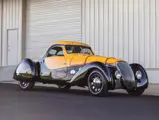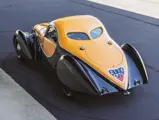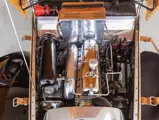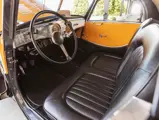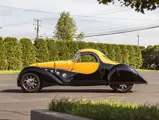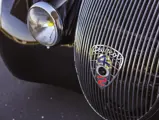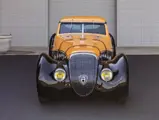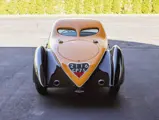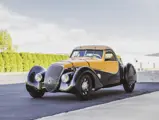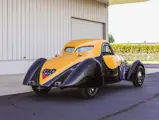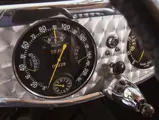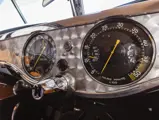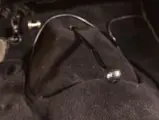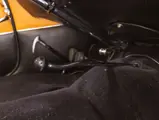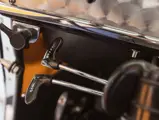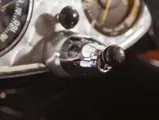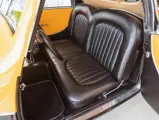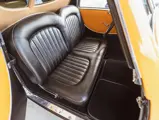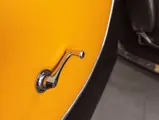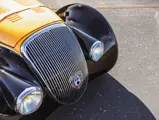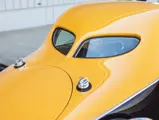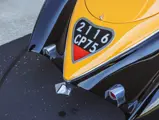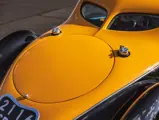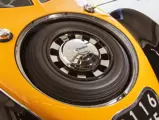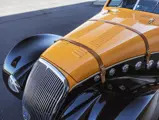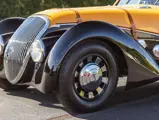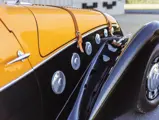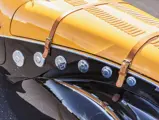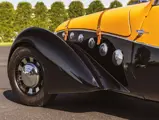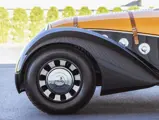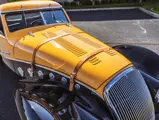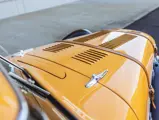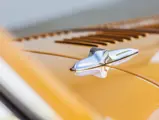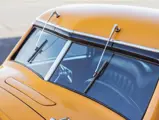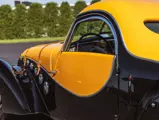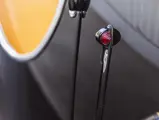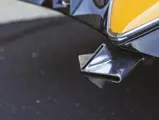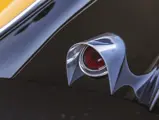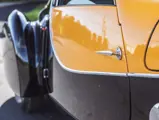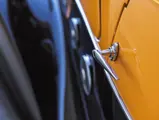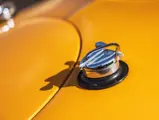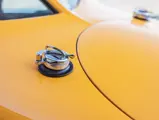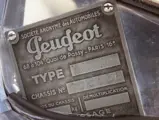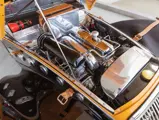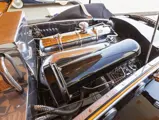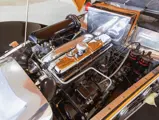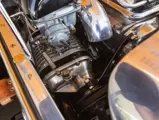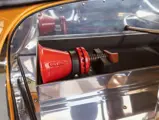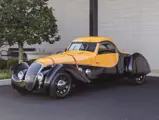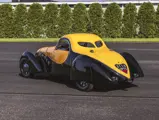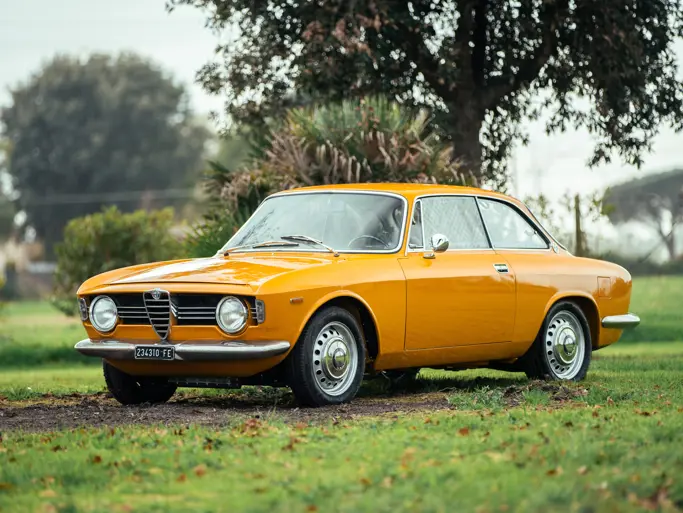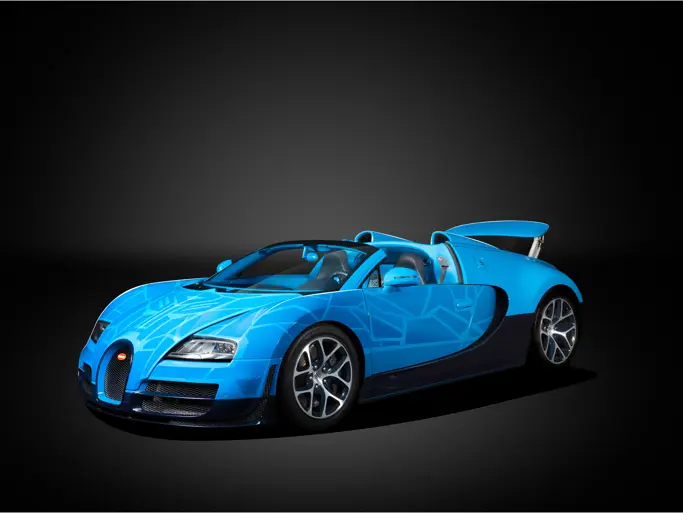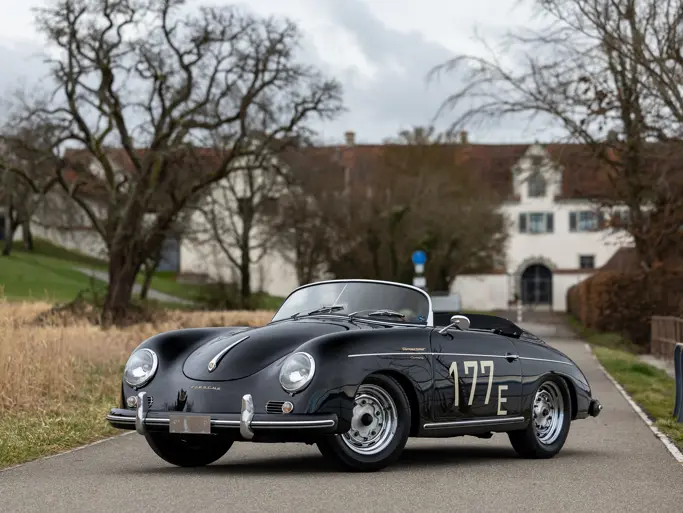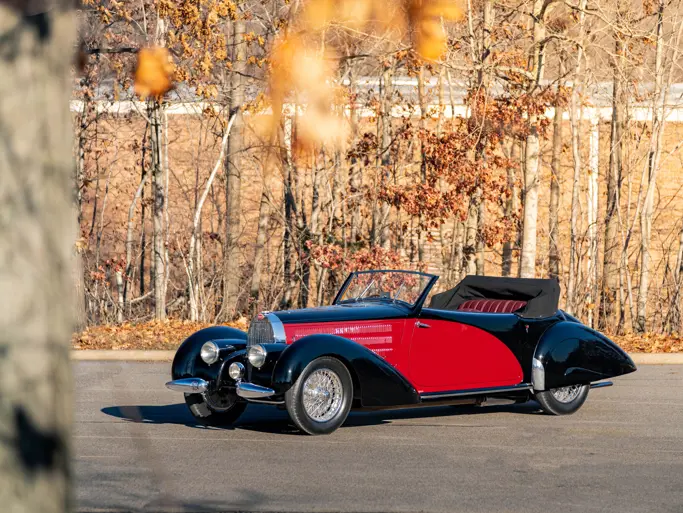Monterey 2022
1938 Peugeot 402 Darl’mat Special Coupe by Pourtout
{{lr.item.text}}
$885,000 USD | Sold
 | Monterey, California
| Monterey, California
{{internetCurrentBid}}
{{internetTimeLeft}}

- Believed to be one of six coupes built on the 402-series Légère (lightweight) chassis
- One of three surviving examples
- One of 105 examples built overall, including all body styles
- Exquisite coachwork design by Pourtout’s Georges Paulin
- Race-bred mechanicals; a direct sibling of the 5th overall finisher and 2-liter class winner of the 1937 24 Hours of Le Mans
- Originally gifted by Emile Darl’mat to racing team director Alfred Giauque
- A unique and magnificent piece of French interwar automotive history
Discussions of top-shelf coachbuilt interwar French automobiles with legitimate competition pedigrees are generally limited to marques such as Bugatti, Delahaye, Delage, and Talbot-Lago. But in collaborating with one of its principal dealers, the mass-market manufacturer Peugeot was able to briefly cross this rarified threshold, producing a short run of dynamic racecars that were equally capable of winning the day’s concours d’elegance.
Emile Darl’mat was a lifelong speed enthusiast who cut his teeth during a four-year apprenticeship with the French aviation pioneer Clément Ader. After World War I he established his own garage in Paris, where he sold and repaired automobiles, all the while tinkering with engines to improve performance. Eventually becoming a licensed dealer of Panhards and Peugeots, Darl’mat by the early 1930s was focused exclusively on Peugeot sales and service.
During his interwar rise, Darl’mat forged working relationships with two of the sector’s most respected names, the Bougival-based coachbuilder Marcel Pourtout and his chief stylist, Georges Paulin. At the 1927 Paris Salon, Darl’mat exhibited the earliest fruit of this collaboration, and at the 1933 Chicago World’s Fair the dealer presented a Peugeot 301 that was mounted with new aerodynamic coachwork designed by Paulin.
By the mid-1930s Darl’mat’s achievements had caught the attention of the executives at Peugeot, who were seeking to return the company to the glory of its motorsports roots. Despite having evolved into a mass manufacturer of pedestrian models, Peugeot had built very successful grand prix cars prior to World War I, even triumphing at the 1916 Indianapolis 500. Privateer André Boillot also drove Peugeots to victory at several notable races after the war, including the 1919 Targa Florio, the 1922 and 1925 Coppa Florio, the 1923 and 1925 Touring Car Grand Prix, and the 1926 24 Hours of Spa.
In 1936, Peugeot began supplying Darl’mat a brief run of chassis from the 302 series sedan. This junior model rode a shorter wheelbase than the range-leading 402 sedan, but shared many mechanical elements, though it was powered by a more diminutive 1,750-cubic-centimeter inline-four engine. Darl’mat replaced the engine with the 402’s more powerful 2-liter motor, and key development contributions were made by Jean Andreau, the director of the Aerodynamic Research Center who held numerous automotive patents, and Victor Derbuell, a supercharging expert who was renowned for boosting the horsepower of production-based engines. The chassis was mounted with beautiful aerodynamic aluminum coachwork penned by Paulin that featured characteristic Art Deco styling, including a sloping front grille, sculpted unintegrated teardrop fenders, streamlined chrome cues, and dual rear glass panels.
Initially unveiled at the 1936 Paris Salon, the Peugeot 302 Darl’mat Special Sport was available in coupe, roadster, and cabriolet configurations, though a majority of cars were completed in the preferred open style for competition applications. With such a strong contender in its stable, Peugeot soon committed to factory support, lending Darl’mat its in-house Director of Mechanical Studies, Alfred Giauque, to helm the dealer’s Le Mans team. Three Darl’mat Special roadsters were then entered at the 1937 24 Hours of Le Mans, finishing 7th, 8th, and 10th, a remarkable display of potential for a debut campaign.
For 1938 Peugeot upped the ante, providing Darl’mat the latest version of its 402 chassis, the 402 Légère (lightweight). Shorter and wider than its predecessor, this chassis became the basis for the more highly developed Peugeot 402 Darl’mat Special, again built in both closed and open body styles. A trio of competition-prepared examples was entered at Le Mans in 1938, and the roadster driven by Charles de Cortanze and Marcel Contet finished 5th overall while winning the 2-liter class, defeating the German Adlers that had prevailed a year earlier.
The 1938 Le Mans proved to be the height of the Darl’mat Special’s competition career, as the record reflects no further entries at Sarthe the following year, in the final running of the race before World War II. It is believed that total production of all variants was limited to only 105 examples, including 53 roadsters, 32 cabriolets, and 20 coupes, and the research of marque expert Hubert Auran suggests that just six coupes were built on the 1938 402-series platform.
According to the combined research of Mr. Auran, Hubert Croisile, and Claude LeGuezec, chassis number 705536 was originally finished in a two-tone exterior of French beige and black, and it was given by Emile Darl’mat in late December 1938 as a Christmas present to team director Alfred Giauque, as a gesture of his appreciation. This was a fitting gift considering that Giauque had long considered the coupe body style to have far more competition potential, although Darl’mat steadfastly insisted on running roadsters because they were lighter.
After surviving the war, this Darl’mat Special was acquired in February 1954 by Jeanne Werotte of Paris, and the coupe subsequently passed to fellow Parisian resident Andre Perigne four years later. In the late 1960s or early 1970s the Peugeot 402 was exported to the United States to join Dr. William O’Brien’s collection in Reno, Nevada. Dr. O’Brien was a close friend of famed collector Bill Harrah, often traveling with him in search of cars for the well-known Harrah Collection.
By the early 2000s, the Darl’mat was in a state of partial disassembly, and it was sold by the well-known Los Angeles-based broker Raymond Milo to Kenneth Pierson, the proprietor of Heritage Auto Body Restoration in Mesa, Arizona. The car was then purchased in 2002 by the consignor, a respected collector who commissioned a comprehensive restoration. Following refurbishment the coupe was presented at the 2004 Pebble Beach Concours d’Elegance, after which the car was entrusted to RM Auto Restoration for a further bout of fine tuning. Fastidiously maintained ever since, the Peugeot enjoyed the distinction of being displayed at the Phoenix Art Museum’s acclaimed “Curves of Steel” exhibition in 2007. The car was also duly covered with a chapter in the accompanying book Curves of Steel, with photography by the respected Michael Furman.
After 20 years of single ownership, this breathtaking Darl’mat Special is now offered to its next caretaker. It features exquisite coachwork by Pourtout, with beautiful design cues evident in its faired-in headlamps and the series of circular chrome shields that elliptically descend the front fenders. The hand-built and tuned Peugeot is believed to be one of just six coupes produced, and one of only three surviving examples. It is the aesthetic equal of the finest Pourtout designs to grace other celebrated French marques, and its close relationship to the competition cars that finished as high as 5th overall at Le Mans testifies to its race-bred engineering.
Ideal for display at major concours d’elegance and celebratory events highlighting the interwar French Curves design movement, this rare beauty would make a sensational addition to any collection of coachbuilt automobiles.

